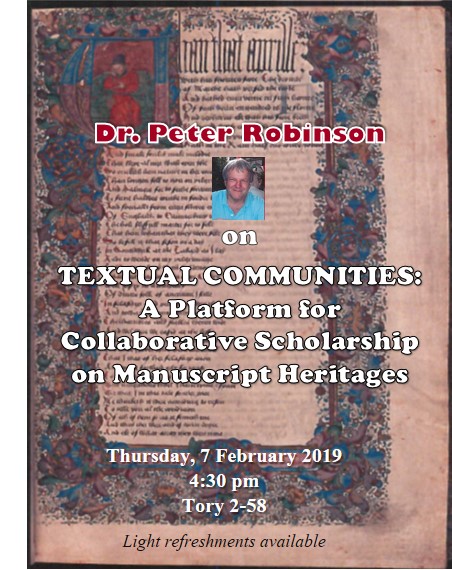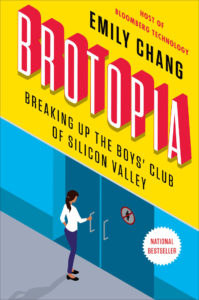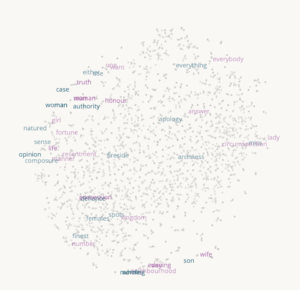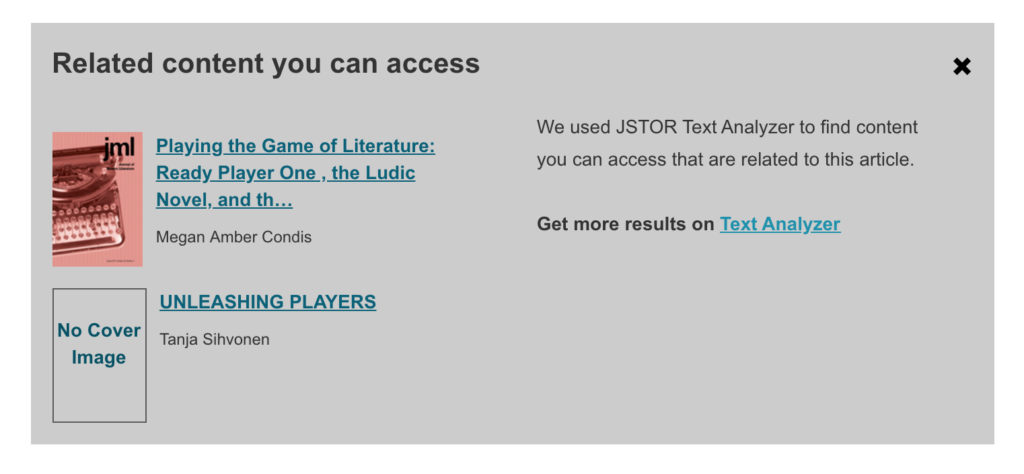
JSTOR, and some other publishers of electronic research, have started building text analysis tools into their publishing tools. I came across this at the end of a JSTOR article where there was a link to “Get more results on Text Analyzer” which leads to a beta of the JSTOR labs Text Analyzer environment.
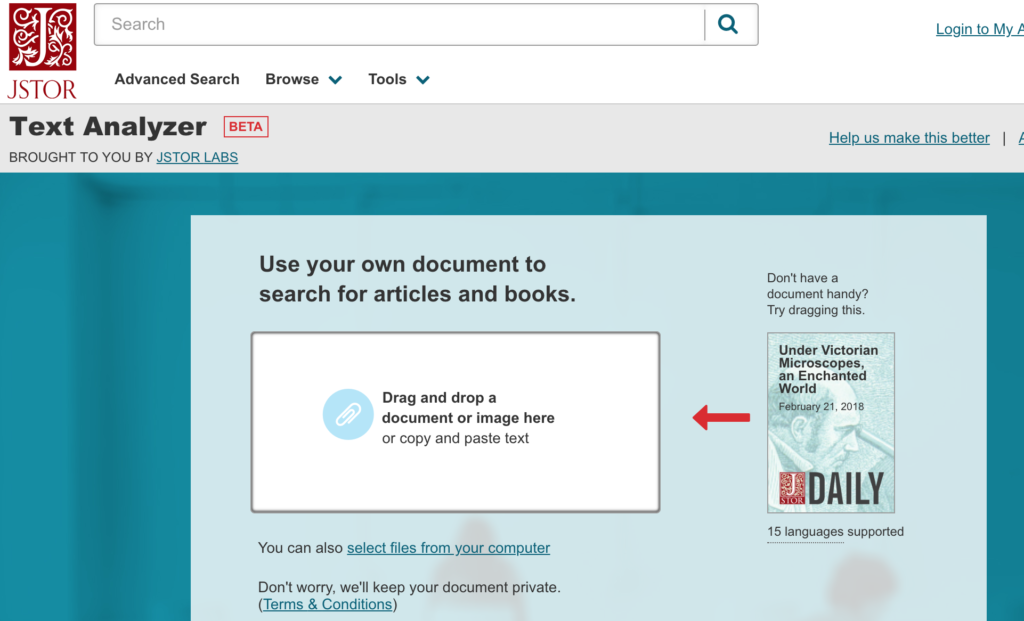
This analyzer environment provides simple an analytical tools for surveying an issue of a journal or article. The emphasis is on extracting keywords and entities so that one can figure out if an article or journal is useful. One can use this to find other similar things.
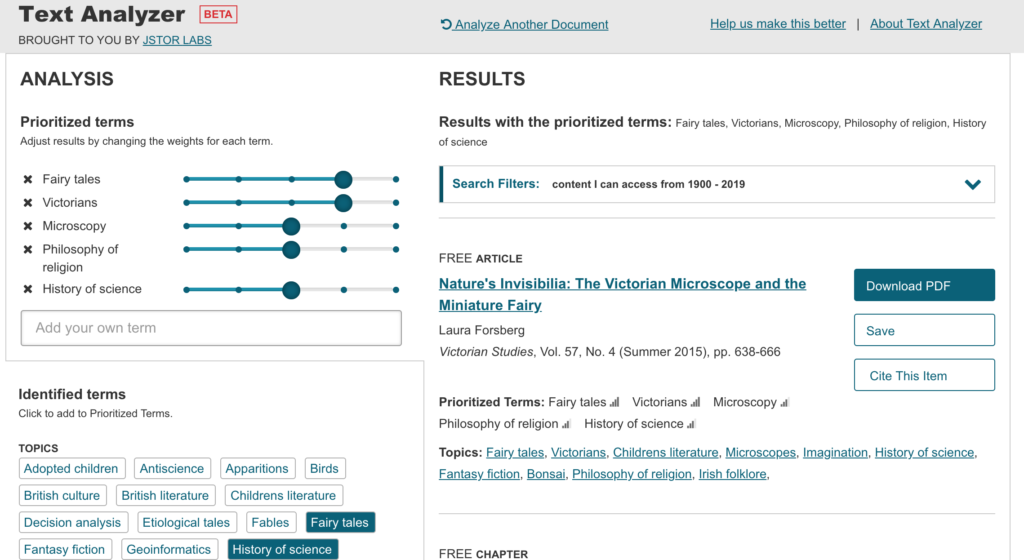
What intrigues me is this embedding of tools into reading environments which is different from the standard separate data and tools model. I wonder how we could instrument Voyant so that it could be more easily embedded in other environments.


